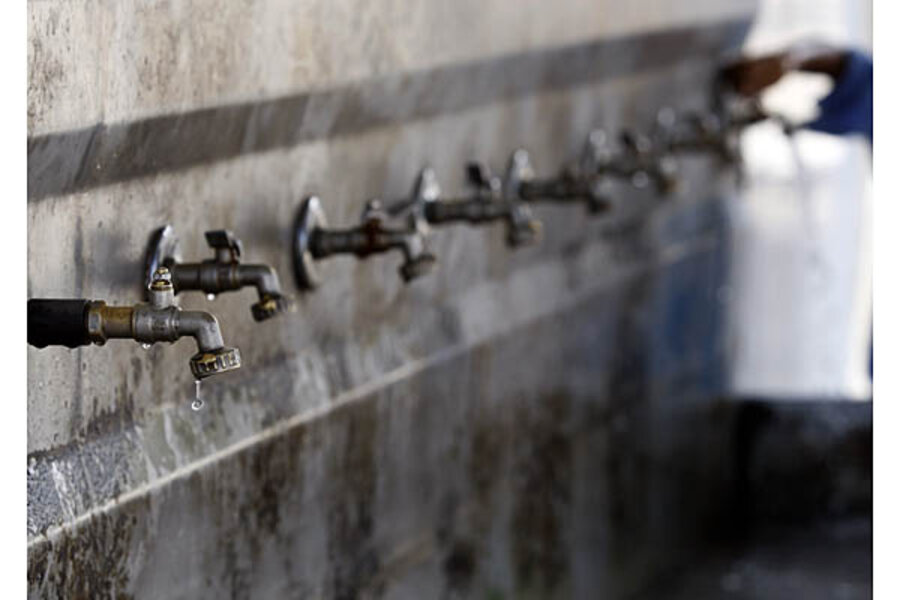World Water Day: Global efforts to conserve our most precious food resource
Loading...
This Saturday, March 22nd, the world celebrates World Water Day. Water and agriculture are inextricably interlinked and interdependent. Agriculture is a major user of both ground and surface water for irrigation—accounting for about 70 percent of water withdrawal worldwide.
Modern irrigation practices, including center pivot irrigation systems, can help improve crop productivity and yields. Unfortunately, irrigation is also the source of excessive water depletion from aquifers, erosion, and soil degradation. But using rainwater harvesting, zai pits, micro-irrigation, bottle irrigation, gravity drip buckets, rotational grazing systems, and other water-saving practices can all help create diverse landscapes, supporting wildlife and culture.
According to the Organization for Economic Cooperation and Development (OECD), 47 percent of the population could be living under severe water stress by 2050. “The world is thirsty because it is hungry,” reports the U.N. Food and Agriculture Organization (FAO). We all consume around 3,800 liters of water everyday and 92 percent of that is used to produce the food we eat, making sustainable practices and reducing water consumption in food, also known as “virtual water,” even more necessary.
Europe uses, on average, 44 percent of water for agricultural use. In the United States, agriculture accounts for around 80 percent of consumptive water use. And in Western U.S. States, such as California, over 90 percent of water use is for agricultural purposes.
California is also facing the worst drought since records began, 100 years ago—approximately 95 percent of the state remains in a drought, with about 23 percent experiencing “exceptional” drought. The state also happens to be America’s breadbasket, supplying nearly half the country's fruits, nuts, and vegetables, and is a major producer of almonds, artichokes, grapes, olives, and other products.
But all over the world farmers are using innovative practices to utilize water more efficiently and in lesser quantities to produce more nutritious foods. And eaters can profoundly reduce water waste and consumption through the food choices they make each day.
In Syria, in the four regions hit hardest by groundwater shortages, the FAO helped the Ministry of Agriculture improve irrigation technology and management techniques. The project benefited 2,750 farmers by providing drip irrigation systems and training farmers on their installation. Drip irrigation saves both water and fertilizer inputs by allowing water to drip slowly through a network of tubing to the roots of plants. And it’s something that can be used on both small large farms all over the world.
Drip irrigation was also introduced on Cape Verde, helping boost the island’s horticultural production from 5,700 tonnes to 17,000 tonnes over an eight year period. And now more than 20 percent of the country’s irrigation has been converted to drip irrigation. Rethinking crop production has helped conserve water resources as well—farmers on the island converted their sugar cane plantations, which are water-intensive, to more diverse crop production, including cultivating peppers and tomatoes, that require less resources and are more suitable to the region’s climate.
In Israel and Spain, farmers have started re-using drainage water from urban areas mixed with groundwater for supplying water to crops. And in California agricultural waste water from irrigating crops is being reclaimed and treated for re-use, benefiting the environment by avoiding discharge of chemicals into surface water and helping retain soil nutrients by preventing them from being washed away with the run-off water.
Across India, the Watershed Organization Trust (WOTR) regenerates watershed communities by harvesting rain water, organizing communities to sustainably manage the land, optimizing irrigation, and planting crops based on water availability. WOTR has reached more than 300,000 people in 300 villages, rejuvenating 200,000 hectares of land.
And eaters and consumers can all do their part to save water by incorporating more native foods into their diets, eating more locally grown foods and less meat, steaming vegetables rather than boiling them, reducing food waste, reconsidering lawn and garden irrigation methods, and supporting family farmers that use less water intensive practices.
On World Water Day this year, Food Tank honors the projects, people, and programs working tirelessly to achieve more with less water and creating innovative systems for the future.







